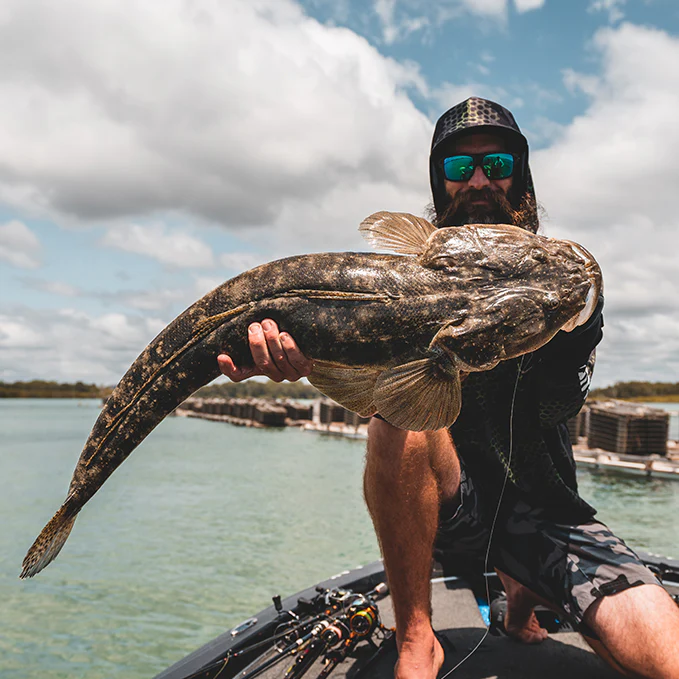Flathead fishing is a favorite pursuit for anglers across Australia, known for the thrill of the catch and the quality of the table fare. With their unique appearance and widespread presence in Australian waters, flathead provide an exciting challenge for shore-based fishermen. In this guide, we’ll explore how to catch flathead from the shore, focusing on the best fishing spots, essential gear, and effective techniques. Whether you’re a beginner or a seasoned angler, these tips will help you succeed in your next flathead fishing adventure.
Understanding Flathead Behavior:
Flathead are bottom-dwelling predators that inhabit sandy and muddy estuaries, bays, and river mouths across Australia. These fish are perfectly adapted to ambush prey, lying in wait on the seabed. Understanding their behavior is key to successful fishing. In colder months, flathead may retreat to deeper waters, but as temperatures rise, they move to shallower areas, providing prime opportunities for shore anglers. Recognizing seasonal patterns can significantly improve your chances of catching flathead.
Finding the Best Fishing Spots:
Choosing the right location is crucial for flathead fishing success. Here are some tips to find the best spots:
- Structure and Habitat:
- Look for areas with sandbanks, seagrass beds, and natural drop-offs. These provide ideal habitats for flathead to hide and hunt. Use local maps or apps to identify promising locations.
- Tidal Movements:
- Tides play a vital role in flathead activity. Fish during the changing tides, particularly rising tides, when flathead are more likely to move into shallower waters in search of prey.
- Weather Conditions:
- Overcast skies and a light breeze are ideal conditions for flathead fishing. These factors reduce visibility and make flathead more active, increasing your chances of success.
- Local Insights:
- Engage with local fishing communities or online forums to gather information on productive flathead spots. Experienced anglers can offer invaluable insights into the best times and places to fish.
Selecting the Right Gear:
Having the right tackle is essential for a successful flathead fishing trip. Here’s what you’ll need:
- Rods and Reels:
- Choose a medium-action spinning rod between 7 and 9 feet long, paired with a smooth-spinning reel. This setup provides the sensitivity and power needed to handle flathead effectively.
- Line and Leader:
- Use a 6-12 lb braided line for its sensitivity and low stretch, coupled with a 10-20 lb fluorocarbon leader to prevent abrasion and increase invisibility in the water.
- Lures and Baits:
- Soft plastics like paddle tails and curly tails are popular choices, mimicking baitfish effectively. Natural colors such as olive, brown, and silver are particularly effective in various water conditions.
- For bait fishing, prawns, pilchards, and live mullet are excellent choices for attracting flathead.
- Terminal Tackle:
- Use hooks ranging from 1/0 to 3/0, depending on your bait or lure size. A small sinker can help keep your offering near the bottom, where flathead typically feed.
Effective Fishing Techniques:
- Casting and Retrieval:
- Cast your lure or bait into likely flathead territory and employ a slow, steady retrieve. Pause occasionally to let your lure mimic the movement of a wounded fish, enticing flathead to strike.
- Covering Ground:
- Flathead can be territorial, so if you’re not getting bites, move along the shore to cover more ground and increase your chances of encountering active fish.
- Reading the Water:
- Pay attention to water conditions and adjust your tactics accordingly. Clear water may require more subtle presentations, while murkier conditions allow for bolder, more colorful lures.
Conservation and Ethical Fishing:
As responsible anglers, it’s important to adhere to local fishing regulations and practice catch-and-release when appropriate. Flathead are a crucial part of Australia’s aquatic ecosystems, and maintaining their populations ensures future generations can enjoy the sport. Always handle fish gently and use barbless hooks to minimize harm.
Conclusion:
Flathead fishing from the shore is a rewarding and exciting experience for anglers of all levels. By understanding flathead behavior, selecting the right gear, and employing effective techniques, you can increase your chances of a successful catch. Remember to respect the environment and fellow anglers as you enjoy the unique challenges and joys of flathead fishing. Share your stories and photos with us on our website and social media channels!
Happy fishing!
